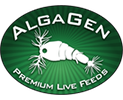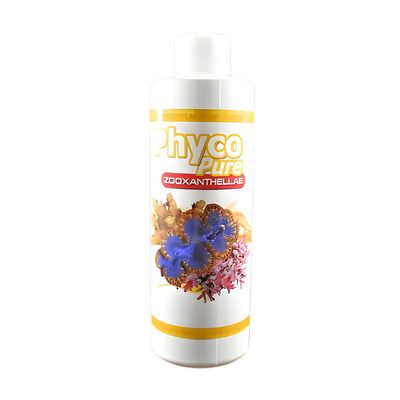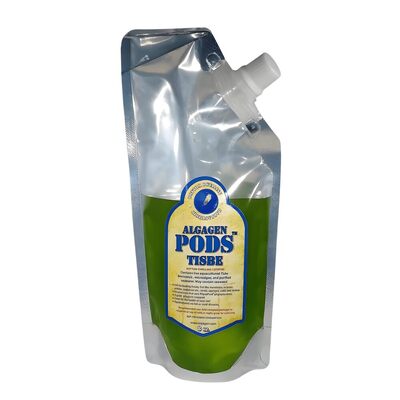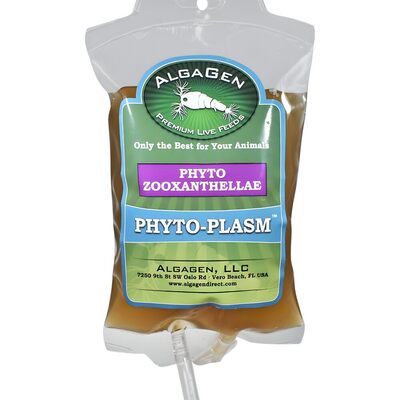Microalgae cultivation is the backbone of sustainable aquaculture, reef tank nutrition, and even biofuel research. While culturing microalgae opens up a world of benefits for aquarium hobbyists and professionals alike, it’s also fraught with challenges that can frustrate even experienced growers. Whether you’re culturing phytoplankton for live feeds, water quality, or scientific study, understanding how to troubleshoot common issues is essential for consistent, high-yield success.
Understanding Microalgae Cultures
Microalgae are single-celled photosynthetic organisms that thrive in aquatic environments. In the aquarium world, they’re used to feed copepods, rotifers, clams, and corals, and to improve water quality by absorbing excess nutrients. Healthy cultures are typically vibrant green, brown, or red (depending on species), with a uniform color and no off-odors. But even the best setups can run into trouble.
1. Contamination: The Most Common Problem
Contamination is the leading cause of microalgae culture crashes. Bacteria, fungi, protozoa, or invasive algae species can quickly overtake your culture, turning clear or green water cloudy, causing foul odors, or leading to sudden die-offs. Symptoms include:
- Cloudy or milky water
- Unusual color changes (e.g., brown in a green culture)
- Visible grazers (rotifers, protozoa) under a microscope
- Rapid drop in pH or oxygen
To prevent contamination, always use sterilized equipment, start with axenic (pure) cultures, and avoid cross-contaminating cultures with nets or pipettes. For more on how microalgae support a balanced aquarium and why live foods matter, see Benefits of Live Rotifers for Your Fish Tank.
2. Poor Growth or Stalled Biomass Production
If your microalgae aren’t thriving, the issue may be with light, temperature, or CO2:
- Light: Most species need 12–16 hours of moderate to strong light (50–200 µmol/m²/s). Weak or inconsistent lighting leads to slow growth and pale cultures.
- Temperature: The sweet spot for most microalgae is 20–30°C (68–86°F). Too cold or too hot, and growth slows or stops.
- CO2 Limitation: In closed systems, carbon dioxide can quickly become limiting. Gentle aeration with room air or direct CO2 injection boosts growth and prevents pH swings.
For a high-yield, easy-to-use microalgae solution, try PhycoPure™ Reef Blend-a proven favorite for both hobbyists and professionals.
3. Nutrient Imbalances and Starvation
Microalgae need a balanced mix of nitrogen (N), phosphorus (P), potassium (K), trace metals, and vitamins. Deficiencies or excesses can cause:
- Yellowing or pale color (nitrogen or iron deficiency)
- Purple or weak cells (phosphorus deficiency)
- Foaming or surface scum (excess nutrients or contamination)
Always use a complete fertilizer designed for microalgae and monitor nutrient levels weekly. If you see signs of deficiency, dose accordingly with sodium nitrate, potassium phosphate, or iron chelate as needed.
| Deficiency | Signs | Solution |
|---|---|---|
| Nitrogen | Yellowing, slowed growth | Add NaNO3 or urea |
| Phosphorus | Purple tint, weak cells | Dose K2HPO4 |
| Iron | Pale coloration | Use Fe-EDTA chelates |
4. Harvesting Challenges
Microalgae are tiny (1–30 µm) and often grow at low density, making harvesting a challenge. Common issues include:
- Low yield: Increase light, nutrients, and aeration for denser cultures.
- Clumping or foaming: Usually a sign of contamination or improper mixing.
- High labor: Use flocculation (clumping), gentle centrifugation, or membrane filtration for easier collection. Some aquarists use copepods like AlgaGenPods™ Tisbe to naturally graze and harvest microalgae in refugiums.
For more on choosing the right pods for your system and how microalgae support their populations, see Choosing the Best Pods for Your Reef Tank.
5. pH Swings and Oxygen Buildup
Rapid photosynthesis can drive pH above 9 or even 10, inhibiting growth and causing nutrient precipitation. Similarly, oxygen can oversaturate the water, stressing the algae. Solutions include:
- Inject CO2 to keep pH between 7.5 and 8.5.
- Increase aeration to release excess oxygen.
- Harvest more frequently to keep cultures in the exponential growth phase.
If you’re culturing zooxanthellae or sensitive species, consider PhycoPure™ Zooxanthellae for stable, high-quality results.
6. Supporting Microalgae with Live Foods
Microalgae are not only important for direct dosing but also as a food source for copepods and rotifers. In freshwater and marine tanks alike, supplementing with microalgae like PhycoPure™ Green Water can help maintain robust populations of these beneficial microcrustaceans. For more on feeding strategies and supporting live food populations, see Freshwater Copepods for Sale: Live Food for Aquariums.
- Start with pure cultures and sterilized equipment.
- Maintain optimal light, temperature, and nutrients for your species.
- Monitor pH and oxygen to avoid stress and die-off.
- Harvest efficiently and avoid cross-contamination.
- Use quality products like PhycoPure™ for consistent results.
Expert Tips for Long-Term Success
- Keep a daily log of color, density, and any visible changes in your cultures.
- Test water quality weekly for ammonia, nitrate, phosphate, and trace metals.
- Rotate cultures and keep backup starter cultures in case of a crash.
- Don’t be afraid to start over with a fresh batch if contamination persists-it’s better than risking your main system.
“Healthy microalgae cultures start with prevention. Monitor daily, maintain sterile techniques, and address issues at the first sign of trouble.”
Conclusion
Troubleshooting microalgae cultures is a blend of science, vigilance, and good habits. By addressing contamination swiftly, balancing nutrients, and optimizing growth conditions, you’ll achieve robust, high-yield cultures that power your aquarium or research. Pair these strategies with proven products like PhycoPure™ Reef Blend and PhycoPure™ Green Water to simplify your workflow and ensure consistent, reliable results.






Recent post